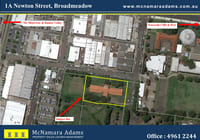
Rates down, demand up: sun shines on property stocks
The listed property sector is enjoying its best prospects since the pandemic period began five years ago as interest rates fall and a vicious cycle of plummeting commercial real estate values looks to be ending, according to UBS.
Turbocharging the rosy outlook is a serendipitous combination of factors: high costs have choked off construction across most sectors in recent years – from housing to office towers – just as demand grows or, in the case of office space, bounces back. That gives the owners and investors in existing real estate the upper hand.

The bullish outlook from UBS – set out in a client note – comes even though the real estate investment trust, or REIT, sector has already outperformed the broader market, gaining around 10.5 per cent in the past year compared to 9.7 per cent for the S&P/ASX 200.
“Core real estate is a positive story. Valuations have reached a trough, interest rates are coming down, and rent growth is really strong,” UBS analyst Tom Bodor told The Australian Financial Review.
“Of course, it’s not all smooth sailing. Development remains difficult. Bond yields have stayed high, and CPI is coming down, which is why rates are getting cut and that impacts some of the leases.”
While some of the expected growth has clearly been priced back into property stocks with fund managers taking on a more positive view of the REIT sector over the last year, there are still bargains to be had.
The metric that best explains opportunity in the REIT sector is a comparison of the property firms’ stock prices against the actual value of their real estate. Even factoring out the two big fund managers – Goodman and Charter Hall, which trade at very hefty premiums already – the sector is trading about a 7 per cent premium to its net tangible assets (NTA) on the UBS analysis.
That makes REITs look a little expensive, but a closer look shows that 12 of the 17 companies covered by UBS are all trading below NTA.
As a result investors in the listed property sector face a choice: do they look for value – stocks that are trading at a discount to NTA – or for companies which show reasonable earnings growth?
“What we’re saying is to really close the gap for those names that have lagged, and some of the smaller names, we need to see growth rates pick up a little bit more,” Bodor said.
“What could cause the valuation gap to close is the better growth that would result from interest rate cuts, but that is a macro call.
“One thing that could become quite a positive scenario is if the sector was just trading at a slightly higher level then some groups would be able to raise equity to buy assets accretively, and that could become quite a positive feedback loop. That’s the picture we’re painting.
“The sector is a bit expensive, but it’s probably somewhat justified by the growth starting to look a little bit better.”
Residential developers, such as Stockland and Mirvac, could expect to achieve better growth and volume as rate cuts come through, whereas some commercial landlords with a big exposure to the office sector, such as Dexus, may be waiting longer for the growth.
Yet, as Bodor points out, for most sectors in real estate, even the battered office market, new supply has dried up, making existing space – and its owners – more valuable.
With a global investment mandate, fund manager Chris Bedingfield, co-founder of Quay Global Investors, takes a broader view on property markets. He is seeing a similar dynamic play out in places such as New York’s office market, where tenants are scrambling for limited space.
As a result, and regardless of where interest rates are, it means pricing power is returning to landlords across most sectors over the next few years, according to Bedingfield.
“If the end price [of a property development] is lower than the cost to build, then developers will just go and do something else. Then you just get a gradual, very slow, but very consistent, build up in tenant demand.
“Tenants start bumping into each other, and you get price tension, you get rent growth. All of a sudden, you get real cash flow growth.”
Also to be factored into the bigger picture for local property stocks is the impact of global economic volatility as President Donald Trump’s trade wars and geopolitical upheaval – in Ukraine and the Middle East – play out.
Property stocks are typically viewed as defensive investments, with a reliable rental income backed by lease agreements. That characteristic can be attractive during periods of uncertainty.
At the same time, large institutional investors, including Australia’s big superannuation funds, which can tap into any global property market, are now looking more warily at the US.
“If a small amount of the capital that was going to go to the US comes to Asia, that’s quite positive for the sector. If it comes to Asia it is likely to go to Japan and Australia,” Bodor said.
Well-placed to assess the direction of capital flow is Charter Hall’s managing director David Harrison, who oversees $83 billion of funds under management, including significant contributions from global investors.
Harrison tells the Financial Review that Australia, on a global perspective, is “screening very well”.
“There is a view that rates will come down lower in Australia than the US. There is a bit more inflation pressure in the US,” he said.
“There is probably a rethink from European and even Canadian pension funds, whether they want to continue to invest in the US versus other parts of the world. We’re a beneficiary of that.”
A further element to that story is that, as Bodor also noted, while global capital looks east and then targets Australia and Japan, Australia may have an edge as Japan grapples with an inflation rate that has hit a two-year high.
“It is not as attractive as a straight yield play as it has been because interest costs could go up. You’ll see a bit of global capital that might otherwise have to Japan coming to Australia,” Harrison said.











